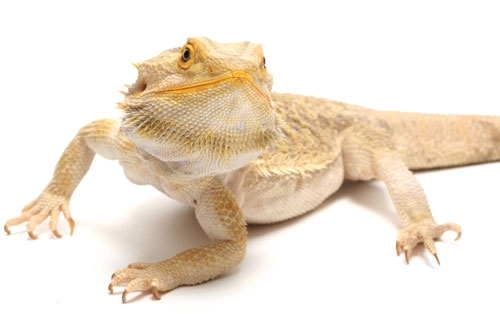Sleep patterns suggest common ancestor between reptiles, birds and mammals.
Lizards have sleep patterns that were previously thought to be in the domain of humans and other mammals, according to a new study published in the journal Science.
German scientists studied the sleep patterns of the bearded dragon (Pogona vitticeps), recording the brain activity of the lizards and found that the popular pet lizard had cycles of eye movements and deep sleep. They found that the sleep rhythm of the lizard is faster than that of humans and other mammals as well as more regular, which results in hundreds of shorter cycles of slow wave sleep and REM.

gina cioli/lumina media
A study looking at the sleep patterns of bearded dragons suggest that they have sleep patterns, including REM that is similar to that of humans.
They also found that all this activity occurs in a different part of the brain than in mammals.
"Although similar to mammalian sleep, lizard slow-wave sleep and REMs resemble a stripped-down version of the richer mammalian repertoire," the scientists wrote in their paper.
The sleep patterns that reptiles, birds, and mammals suggests that there is a common ancestor that evolved between 300 and 320 million years ago, according to the study.
"Those were probably small and lizard-like animals," said lead researcher Dr Gilles Laurent of the Max Planck Institute for Brain Research in Frankfurt, Germany. "They lived between 300 and 320 million years ago, at a time when the earth's continents formed a single land mass."



